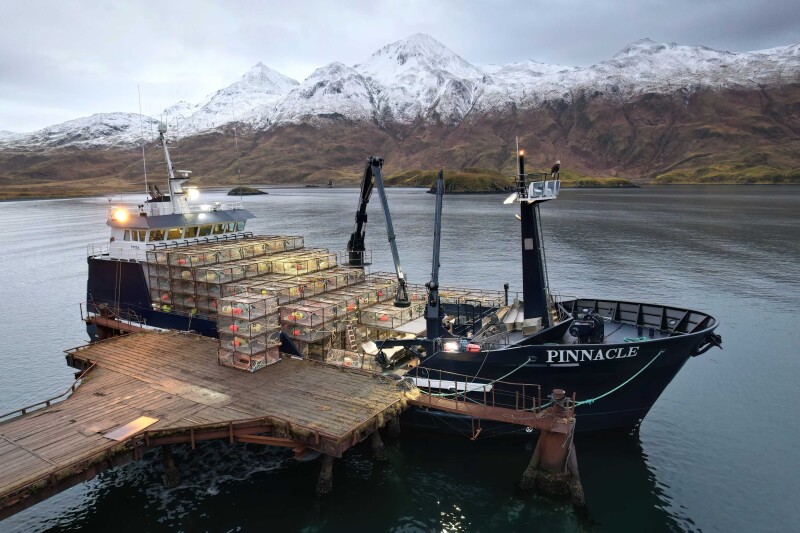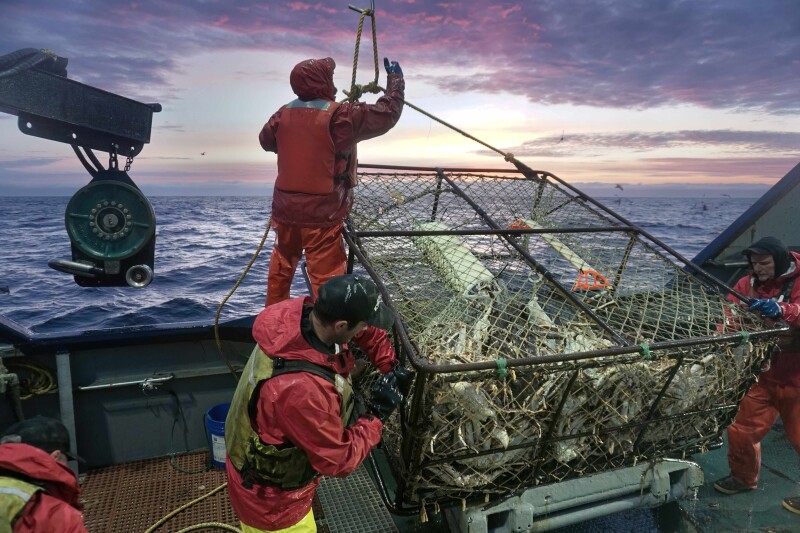The future for Alaskan crabbers remains uncertain as the fleet grapples with mounting costs, economic challenges, and an unpredictable recovery for crab stocks. As industry leaders gather at the Pacific Marine Expo (PME), the conversations are centered not just on the fisheries themselves but also on the resilience of the fishing communities and the lives that depend on them.
Jamie Goen, executive director of Alaska Bering Sea Crabbers (ABSC), and Gabriel Prout, a veteran Alaskan crab fisherman, illuminated the uphill battle facing the crab fleet. While relief programs do exist, many have proven ineffective, leaving the industry without a reliable safety net. “The disaster relief process is a disaster within itself,” Goen stated bluntly. “It takes so long for funds to reach the people who need them that by the time they do, the significance is lost.”
The landscape for Alaskan crabbers has always been challenging, but recent years have intensified these struggles. Financial institutions familiar with the regional fisheries provide some hope. “The banks are so regionalized within Alaska and the Pacific Northwest, they are relatively familiar and aware of the fisheries that they are directly supporting when they provide these loans,” noted Prout. “So, there’s a little bit of working room.”
Prout added that while some banks understand the unique challenges faced by fishermen, it often comes down to the personal relationships with lenders. “If you have a good rapport, you might find some leniency, but that’s not a guarantee,” he mentioned.
Seeking Equality with Farmers
The push for a dedicated seafood office within the USDA is one pressing issue within industry. Goen and other leaders believe such an office would level the playing field for fishermen, who often wait much longer for assistance than farmers. “Farmers get rapid support,” Goen explained. “We’re asking for similar programs so that when fisheries struggle, fishermen aren’t left waiting years for relief.” This sentiment echoes the ongoing discussions about the Farm Bill, which could open new doors for the fishing sector. It further emphasizes the need to include fishing and seafood operations in the same bills as agriculture to support all U.S. businesses that put local food on our tables. Noah Oppenheim, principal of Homarus Strategies, leads a discussion about Commercial Fisheries and Seafood in the Farm Bill at PME on Nov. 21 from 12:45-1:30 on the Main Stage.
Challenges also loom in the effort to modernize aging vessels. The high costs associated with building new boats under the Jones Act make it difficult for fishermen to replace or retrofit their fleets. “It’s been cost prohibitive for most fishery sectors, particularly crab,” Goen noted. “There are some grants available for retrofitting engines to make them more fuel-efficient and greener, but we could build more efficient vessels if laws in the U.S. made it more affordable and encouraged innovation.”

The stress that fishermen face due to seasons being cut short and canceled for years at a time has raised questions regarding aging vessels and maintenance costs. Due to season cancellations, these crab vessels have been forced to sit at docks instead of work, with only a handful of opportunities for these fishermen to put their vessels to work, largely tendering for other fisheries with some vessels fishing Pacific cod and even fewer being used as research platforms. “As harvesters, we need to explore ways to further diversify our businesses to keep fishermen and vessels working to remain viable. Otherwise, coastal communities, the hard-working families that rely on these fisheries, and support businesses all suffer. Our economy suffers,” said Goen. Looking forward, we need to evolve our thinking to allow more flexibility in fisheries management and more diversification between fisheries.
Building Community Resilience
As Goen articulated, “We need national support that considers more than just the stock. Fishermen and their communities need tools to diversify and build resilience too.” Despite a flicker of optimism regarding the recovery of crab stocks, many fishermen, including Prout, worry about their ability to hold on long enough to witness that turnaround. “Maintaining these vessels is costly, and it’s not like crabbers can just jump into other fisheries,” he said. “We’re constantly trying to find ways to cut costs and invest in equipment, but low revenues make it tough.”
Goen emphasized the importance of focusing on the fishermen themselves rather than just the fish. “Nationally, there’s a lot of money for building resilient fisheries from the Inflation Reduction Act funds,” she explained. “But what we’re seeing is that most of that money is going towards more science, research and projection models, which is important, but it doesn’t help the fishermen and communities actually respond to a crisis like we’ve experienced in crab. We need some of these funds for tools to help the human side of the equation to build their resilience. We need tools available to help fishermen and communities diversify.”
The Importance of Conversation
This conversation leading up to PME is just the beginning. Goen and her colleagues remain hopeful that increased industry collaboration can foster the resilience needed to weather these times. “If the people and communities behind the fisheries aren’t supported, the whole system fails,” she stated.
Prout added, “The cost to run and maintain these vessels is extremely high, and when the crab stocks are at these low levels, it’s unnerving and challenging.” As he mentioned, there’s a slight optimism about potential stock recovery, yet the struggle to sustain operations is ever-present.
Goen expressed the necessity of focusing on the fishermen’s needs as a core part of rebuilding efforts. “We can’t just keep looking at the stock,” she stated. “We must consider how to build resilience in the fishermen and communities, how to help them diversify, and how to get more flexibility in the management system.”
It is essential to see crabbers involved in conversations about fishery, community, and fishermen's resilience. As we look toward the future, the road to recovery is undoubtedly steep, but if there’s one thing the Alaskan crab fleet knows, it’s how to endure the toughest storms. As Goen shared, “Fishermen are some of the most resilient people out there. But without systems in place to support them, it’s hard to keep moving forward. It’s time we match that resilience with action.”
In the face of adversity, Alaskan crabbers continue to stand strong, fueled by their dedication to their work on their water, the stock’s sustainability, and their unwavering spirit to thrive against the odds.







